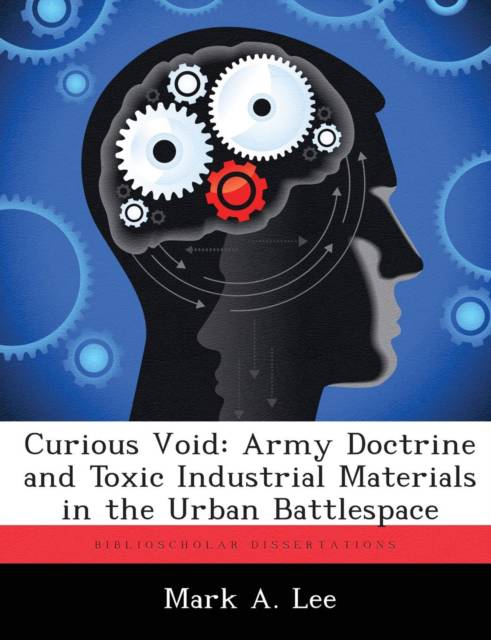
Door een staking bij bpost kan je online bestelling op dit moment iets langer onderweg zijn dan voorzien. Dringend iets nodig? Onze winkels ontvangen jou met open armen!
- Afhalen na 1 uur in een winkel met voorraad
- Gratis thuislevering in België vanaf € 30
- Ruim aanbod met 7 miljoen producten
Door een staking bij bpost kan je online bestelling op dit moment iets langer onderweg zijn dan voorzien. Dringend iets nodig? Onze winkels ontvangen jou met open armen!
- Afhalen na 1 uur in een winkel met voorraad
- Gratis thuislevering in België vanaf € 30
- Ruim aanbod met 7 miljoen producten
Zoeken
Curious Void
Army Doctrine and Toxic Industrial Materials in the Urban Battlespace
Mark A Lee
Paperback | Engels
€ 54,45
+ 108 punten
Omschrijving
This monograph investigates US Army potential to operate in a toxic urban environment. The monograph begins by demonstrating the increasing likelihood of urban operations precipitated by global urbanization. Joined with the rapidly growing population is a growing list of operationally significant toxic materials in the urban environment. Toxic industrial chemicals, radioactive material and industrial hazards present unique hazards throughout the urban complex. The monograph frames the civilian emergency response capability in the DTLOMS model. Since Civilian emergency response agencies routinely plan, identify and mitigate toxic materials, analysis of their methods highlighted some of the critical functions. After Civilian capabilities are evaluated, the monograph identifies the current US Army capability using the DTLOMS model. A case study of the US Army's response to toxic materials in Bosnia-Herzegovina during Operation Joint Endeavor demonstrated the incoherent US response. The monograph concludes that US Army forces do not have the DTLOMS to plan, identify and mitigate these hazards. The conclusion recommends several changes needed to meet this new operational challenge
Specificaties
Betrokkenen
- Auteur(s):
- Uitgeverij:
Inhoud
- Aantal bladzijden:
- 56
- Taal:
- Engels
Eigenschappen
- Productcode (EAN):
- 9781286860205
- Verschijningsdatum:
- 26/10/2012
- Uitvoering:
- Paperback
- Formaat:
- Trade paperback (VS)
- Afmetingen:
- 189 mm x 246 mm
- Gewicht:
- 117 g

Alleen bij Standaard Boekhandel
+ 108 punten op je klantenkaart van Standaard Boekhandel
Beoordelingen
We publiceren alleen reviews die voldoen aan de voorwaarden voor reviews. Bekijk onze voorwaarden voor reviews.











